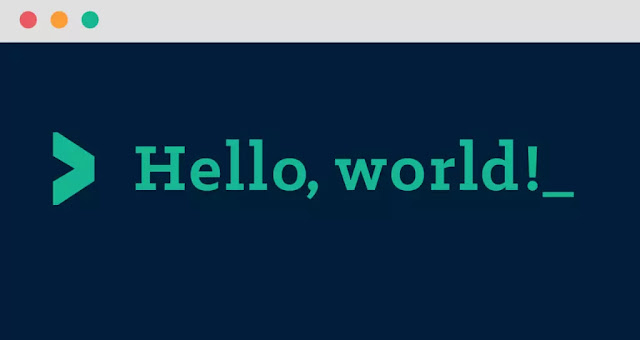The HelloWorld Program

When learning a new programming language, the first task is normally to write a program which simply prints the words “Hello World” to your computer’s display. Once we have written, compiled, and executed the program, and verified that “Hello World” appears on the display, we have successfully run the HelloWorld program.
Section 1 - Creating and Running the HelloWorld Program
In your favorite text editor, or in your programming Integrated Development
Environment (IDE) , create a file named HelloWorld.java which contains the
following:
Listing 1 - HelloWorld.java
1 public class HelloWorld
2 {
3 public static void main(String[] args)
4 {
5 System.out.println("Hello World");
6 }
7 }
To compile and run HelloWorld.java from the command line, type the following:
javac HelloWorld.java
java HelloWorld
The Javac command runs the Java compiler which converts Java source file
HelloWorld.java into bytecode file HelloWorld.class . Java source files are text
files containing the syntax, or programming rules, of the Java programming
language. All Java source files end with the extension .java .
The Java command runs the HelloWorld.class executable in the Java Virtual
Machine (JVM). The following output is now visible on your computer display:
Hello World
Congratulations, you’ve just run your first Java program!
Section 2 - Analyzing the HelloWorld Program
Let’s look at HelloWorld.java line by line to understand how it works. Line 1
contains the following:
public class HelloWorld
All Java source is contained within a class , which is simply a user-defined type.
The name of the class can be any valid Java identifier (discussed in the Variables
lesson). We have given our class the name HelloWorld .
The keyword public is a modifier, which makes the class visible to the whole
world. Java source files can have only one public class. If the source file
contains a public class, the name of the class must match the name of the source
file (public class HelloWorld can only exist inside file HelloWorld.java ).
Scope refers to the region of memory in which a construct is defined. In Java, the scope is defined using curly braces. The open curly brace character, {, begins a
scope, while the close curly brace character, }, ends a scope. The scope of class
HelloWorld is defined within the open curly brace character on line 2 of Listing
1 and the close curly brace character on line 7 of Listing 1.
Line 3 of HelloWorld.java contains the following:
public static void main(String[] args)
A statement directs your program to take a single action. All the work that your
computer program does, referred to as code , consists of a series of statements.
In Java, all statements end with the semicolon character (;) . All statements are
organized within methods , which are simply series of statements which are
grouped together in order to perform a common task. All methods are defined
inside classes, and the name of the method inside class HelloWorld is main .
The main method is special in Java. When you run the HelloWorld program
using the Java command, the JVM looks for a method called main , and executes
it.
You can pass information to a method, and the method can use this information
internally. We use the term parameters to refer to this information. Parameters
are specified immediately after the name of the method within parentheses. The
main method has parameter String[] args , which is a Java array of String
references named args (discussed in the Methods and Arrays lessons).
The main method begins with the public modifier. This states that main can be
called outside the class HelloWorld . The static keyword specifies that we do not
need an object to call main (discussed in the Objects and References lesson). The
void keyword is the return type of the main method. It specifies that main does
not return a value to the JVM. The main method must be specified as on line 3
(except that any name may be used for the args parameter) for your program to
compile and run correctly.
The scope of the main method is specified within the curly braces on lines 4 and
6. Our main program contains the following statement (ending in a semicolon):
System.out.println(“Hello World”);
System.out is a stream which represents the standard output of your computer.
When running a Java program from the command line, the standard output is
displayed in the command window. When running in an Integrated Development
Environment (IDE), the standard output is displayed in the IDE’s output window.
System.out is a stream which represents the standard output of your computer.
When running a Java program from the command line, the standard output is
displayed in the command window. When running in an Integrated Development
Environment (IDE), the standard output is displayed in the IDE’s output window.
No comments:
Post a Comment